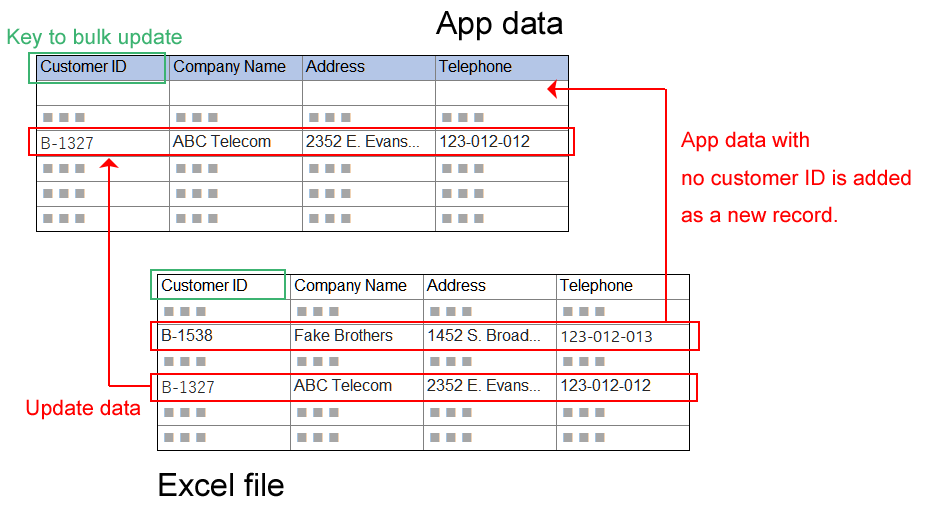Notes on Exporting Records to a File
This article describes important points to keep in mind when exporting records to a file.
You can also find notes on bulk updating records in an app using an exported file.
Make sure to read the notes described on this page before exporting data to a file.
Notes on exporting data to a file
-
To export an app's data to a file, you need to have the "Export to file" permission for the app.
By default, the "Export to file" permission is granted only to app creators.
As necessary, grant the "Export to file" permission to the user who will carry out the operation.
Reference: Configuring permissions for apps -
The following data cannot be exported to a file.
- Labels
- Attachments
- Related records
- Comments
- Change history
Note that some types of data cannot be imported into an app from a file even though they can be exported to a file. For details, refer to Import/export of app data.
-
If the size of a file to be exported exceeds 100 MB, the export fails. In such a case, reduce the number of fields and records to export at one time.
Notes on exporting files to use for updating records in bulk
If you want to bulk update records in an app using an exported file, export the following fields to the file.
- Fields that you want to update the values for
- The field to use as the key when data is bulk updated ("Key to bulk update")
The field specified as the Key to bulk update is used for associating data in the file with data in the records to be updated.
When you import a file, records are either added or updated. It is determined by whether or not the value of the field specified as the key to bulk update (app data) matches the value of the associated column in the file (file data).
- When a value of the field specified as the Key to bulk update matches the value of the corresponding column in the file, the data of the record is replaced with the data in the row of that particular cell in the file.
- When a value in the corresponding column in the file does not match any of the value of the field specified as the Key to bulk update, the data in the row of that particular cell in the file is added as a new record.

Fields that can be used for the "Key to bulk update"
The following types of fields can be specified as the Key to bulk update.
- Record number
- Text
- Number
- Date
- Date and time
- Link
The field specified as the Key to bulk update must be one that does not accept duplicate values across multiple records.
- The record number is a unique value that is automatically assigned when a record is created, and there are no duplicates across the records in an app. Therefore, it is often used as the key to bulk update.
When you specify the Record number field as the key to bulk update, you should note the following: if the corresponding column in the file contains a record number that does not exist in the app, the file cannot be imported. - When you specify a field other than the Record number field (a Text, Number, Date, Date and time, or Link field) as the Key to bulk update, you must enable Prohibit duplicate values for the field in its settings.
